
Zvezda's forward port connects to Zarya. Zvezda's top port connects to Poisk. Zvezda's bottom port connects to Nauka. (previosly connected to Pirs.)
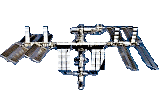

Zvezda's forward port connects to Zarya. Zvezda's top port connects to Poisk. Zvezda's bottom port connects to Nauka. (previosly connected to Pirs.)

The Service Module [SM], called 'Zvezda', was the first fully Russian contribution to the International Space Station. Zvezda, which means "Star" in Russian, was launched un-piloted on July 12, 2000, from the Baikonur Cosmodrome in Russia. It was lifted into orbit on a Russian Proton rocket and was then berthed by remote control to the rear port of the orbiting Functional Cargo Block [FGB] (Zarya).
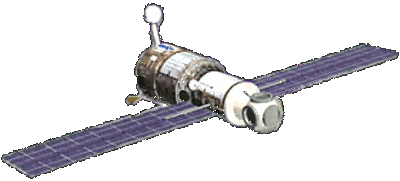
Zvezda initially provided the following station systems:-
* Living quarters;
* Life support system;
* Propulsion system;
* Data processing system;
* Flight control system;
* Electrical power distribution;
* Communications system.
Many of these systems were supplemented or replaced by later station components, however Zvezda remains the structural and functional center of the Russian segment.

Reference: Wikipedia - Zvezda | Russian Space Web - Zvezda
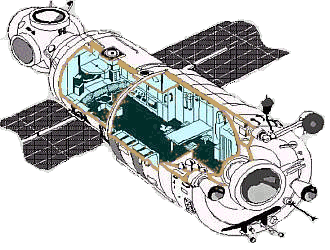
Zvezda contains four main compartments:-
Forward end; spherical; pressurised; three windows for viewing docking activities.
Centre; cylindrical; pressurised; one 16-inch diameter window in each crew compartment plus others for Earth and intra-module observations.
Aft end; cylindrical; pressurised.
Around Transfer Chamber; not pressurised; containing propellant tanks, thrusters and communications antennas.
Zvezda has four ports for docking Russian spacecraft:-
* Rear Facing - This port has a probe and cone docking mechanism for Russian spacecraft.
* Forward facing - berths permanently to Zarya [FGB].
* Upward facing (top) - berths to Poisk [MRM-2].
* Downward facing (nadir) - berths to Pirs [DC-1] (to 2021) and to Nauka [MLM] (from 2021).
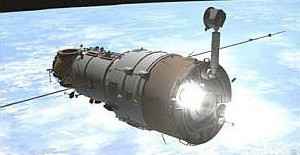
Zvezda has two main engines at the rear for raising (re-boosting) the station's orbit. These can't be used when a Progress supply craft is docked to its aft port, however the Progress' engines may be used instead.
If all of Progress' propellant is not used, the excess can be transferred to Zarya's tanks through lines routed through Zvezda.
Zvezda also has smaller engines (thrusters) on its top, bottom and sides for fine adjustments of the Station.
Mass: 42,000 lbs. Wingspan: 98 ft. Length: 43 ft.
The crew's facilities in Zvezda include:
* Personal sleeping quarters,
* Toilet and hygiene facilities,
* Kitchen with a refrigerator-freezer,
* Table for securing meals while eating.
* Exercise equipment including a treadmill and stationary bicycle.
The crew's wastewater and condensation water is recycled for use in oxygen-generating devices,but is not for drinking water. Space walks using Russian Orlan space suits can be performed from Zvezda by using the Transfer Compartment as an airlock. Zvezda also provides data, voice and television communications with Mission Control in Moscow and Houston.
At launch, many systems were in standby mode. Once in orbit the following were deployed and activated via preprogrammed commands onboard:-
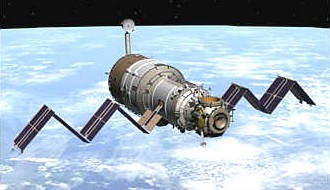
* Solar arrays
* Kurs rendezvous and docking system
* Lira communications system antenna
Zvezda then became the passive vehicle for a rendezvous with the station.
As the "target" vehicle, Zvezda maintained a station-keeping orbit while Zarya/Unity performed the rendezvous and docking using the Russian 'Kurs' automated system.
Following the docking with the Zarya (Functional Cargo Block), Zvezda assumed responsibility for attitude control and re-boost. Many of the systems were then de-activated and it now serves primarily as a propellant storage and pressurized stowage facility.
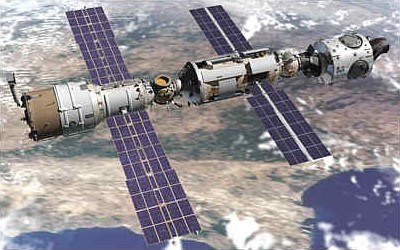
The European Space Agency (ESA) provided the Data Management System, which serves as the "brain" of Zvezda.
This computer system not only controls service module functions, but also provided initial control of the guidance and navigation for the Station.
Later the U.S. laboratory (Destiny) systems assumed management and control of ISS operations.